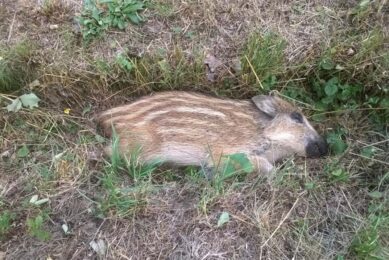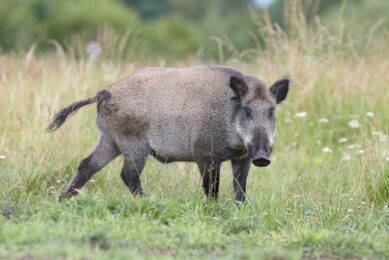Merial launches piglet indication for its PCV2 vaccine Circovac
The third forum ‘Update on Pig Production and PCVD’, organised by Merial Animal Health in Malta, was the occasion of the formal launch of the piglet indication of Circovac in the European Union.
Late April, over 200 delegates from Europe and beyond attended lectures presenting clinical results from Europe, Asia and South America after piglet, sow, or piglet-plus-sow vaccination.
The piglet indication registration step was taken, “because the need was clearly expressed by different markets and by practitioners in the field”, Sophie Randoux, technical and marketing director for production animals, said.
The vaccine is now the only one on the market having both sow and piglet indications.
Update
Dr Sergio Lopez Soria (CReSA, Barcelona) presented an update on Porcine Circovirus Disease (PCVD) in 2011, confirming that sub-clinical infection by PCV2 is measurable when piglets from the field are transferred to experimental facilities.
Dr Laurent Fischer (Merial R&D, Lyon) presented trial results from the vaccine’s registration file, demonstrating that not only PCV2 viraemia and mean viral load are significantly decreased in piglets vaccinated, but also that they have a lower level and duration of faecal excretion.
Field experience
Field experience with vaccinating piglets was provided by experts from different continents. Dr Maria Nazare Torres Simoes (swine practitioner, Brazil) reported the results of duplicate trials on large farms with a documented history of PCVD, where vaccinated piglets not only had improved performances, but also presented less lung lesions and more disease-free lungs at slaughter.
Dr Henry Too (technical director, Merial Asia) presented several piglet vaccination trials, including a blinded, randomised and controlled trial conducted on a Japanese farm. All performance parameters were significantly better among vaccinates, and who also had a lower viraemia (measured by PCR) at 18 weeks of age.
Preventive measure
From Europe, Dr Luis Alberto Garcia Pino (Inga Food, Spain) explained how PCV2 piglet vaccination had become a systematic preventive measure in Spain’s second integrator (1 million pigs slaughtered per year). Being sceptical about the impact of PCV2 on performances, a first pilot study was performed, which was promising. By mid-2009, all weaners were vaccinated, with a return on investment varying from 4.2 to 5.8 according to the regions.
Prof Mathias Ritzmann (University of Veterinary Medicine, Vienna, Austria) presented the results of a controlled randomised field trial that took place on a 250-sow farrow-to-finish farm. The vaccinated piglets had a highly significantly improved average daily weight gain and decreased mortality over the entire fattening period (p<0.001), as compared to placebo-injected piglets. Other trials on piglet vaccination from the UK, Italy and France were presented by practitioners, with comparable significant improvements.
Sow-plus-piglet vaccination
The last third of the forum highlighted the prevention of reproductive disorders in sows, where up-to-date experimental results were presented by Prof Hans Nauwynck (University of Ghent, Belgium), Prof Giuseppe Sarli (University of Bologna, Italy). All these data confirm that PCV2 infection both by the intra-uterine and transplacental routes is possible, and that foetal damage can be restricted to a limited fraction of a litter.
Dr Milena Grozeva (SAM BS, Bulgaria) reported how mass piglet vaccination protocol was implemented on a 2,700-sow Bulgarian farm from the DanBred network, followed by the usual piglet vaccination at weaning. Six months after the implementation of this protocol, mass vaccination of the breeding animals was undertaken, and sow plus piglet vaccination became a routine from December 2009 onwards. Results show a progressive improvement of growth performance, levelling out at 1060 g/d during the fattening period once both sows and piglets were vaccinated.
Also, the number of weaned piglets per litter had improved by 0.8 over 15 months (p<0.05), reflected by the 13.2 kg increased weaned litter weight (at 97.2 kg) since vaccinating both sows and piglets.
Related website:
• Merial
Join 18,000+ subscribers
Subscribe to our newsletter to stay updated about all the need-to-know content in the pigsector, three times a week. Beheer
Beheer










 WP Admin
WP Admin  Bewerk bericht
Bewerk bericht